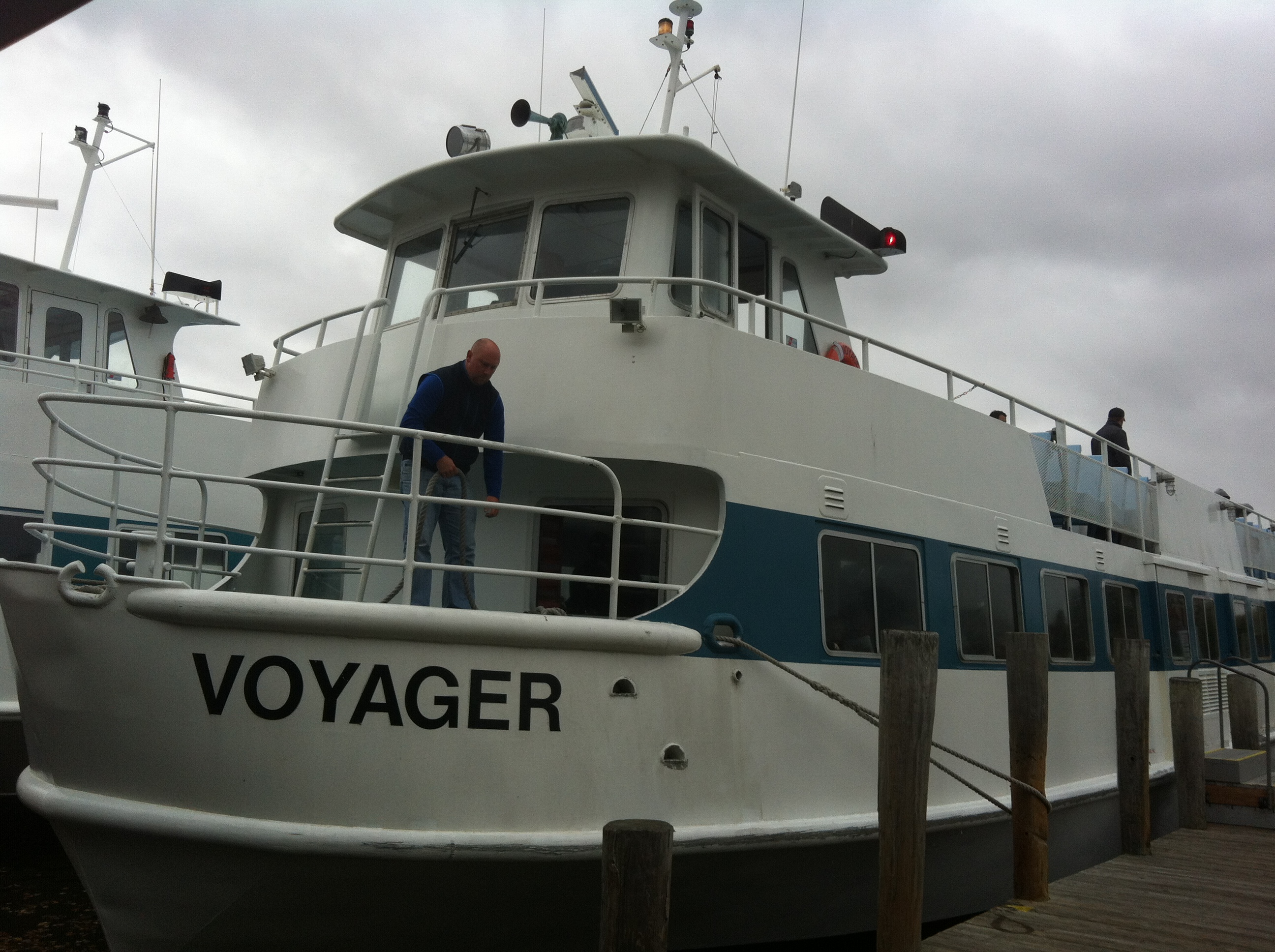
PHOTO COURTESY OF FIRE ISLAND NEWS
In case you missed this, stay alert !
Fire Island ferry captain, crew rescue boaters, police say
A sharp-eyed Fire Island ferry captain and his quick-thinking crew saved two Bay Shore men who were knocked out of their boat by a wave Saturday night and into the Great South Bay, Suffolk County police said.
Captain Victor Klipp, 26, however, gave the credit for the rescue to the cellphone one of the men held above the chilly, choppy waters.
“That cellphone saved that guy’s life,” the modest mariner said Sunday at Fire Island Ferries terminal in Bay Shore.
Suffolk County Police Marine Bureau Officer Robert Reed, however, said Klipp and his crew deserve all the credit.
“It was cold and really dark and windy last night, and out on the Bay was really choppy,” Reed said. “Those guys were in the water for a half-hour and they didn’t have life vests on either — they would have only made it another 10 minutes.”
Police say Gerald Corsini, 52, and Donald Deveau, 63, were headed home from Kismet at about 9 p.m. when a wave hit their 18-foot center console boat, knocking them into the water. Corsini was holding his cellphone out of the water and trying to call for assistance when Klipp saw the device’s light.
Klipp, operating the Fire Island ferry Voyager, said he and his crew were headed to Kismet with about five passengers on board when he spotted a light in the water at about 9:30 p.m. Saturday. Then Klipp and his crew heard screams for help coming from the water.
Crew members Richard Stewart, John Murray and James Sorzono threw life rings and and life jackets to the men and pulled them aboard the ferry.
“You never expect to see two people drowning in the middle of the Bay,” Klipp said. “It was crazy.”
Klipp said the rescue took about five to seven minutes.
“They were getting knocked around pretty good. If it weren’t for that cellphone, we would have never seen them,” he said.
Reed and Suffolk County Marine Bureau Officer Robert Reuter, aboard Marine Juliet, responded to the scene, secured the boat and brought Corsini and Deveau to shore.
Deveau and Corsini were cold and exhausted, but they declined medical treatment, according to police. Neither man responded Sunday to requests for comment.